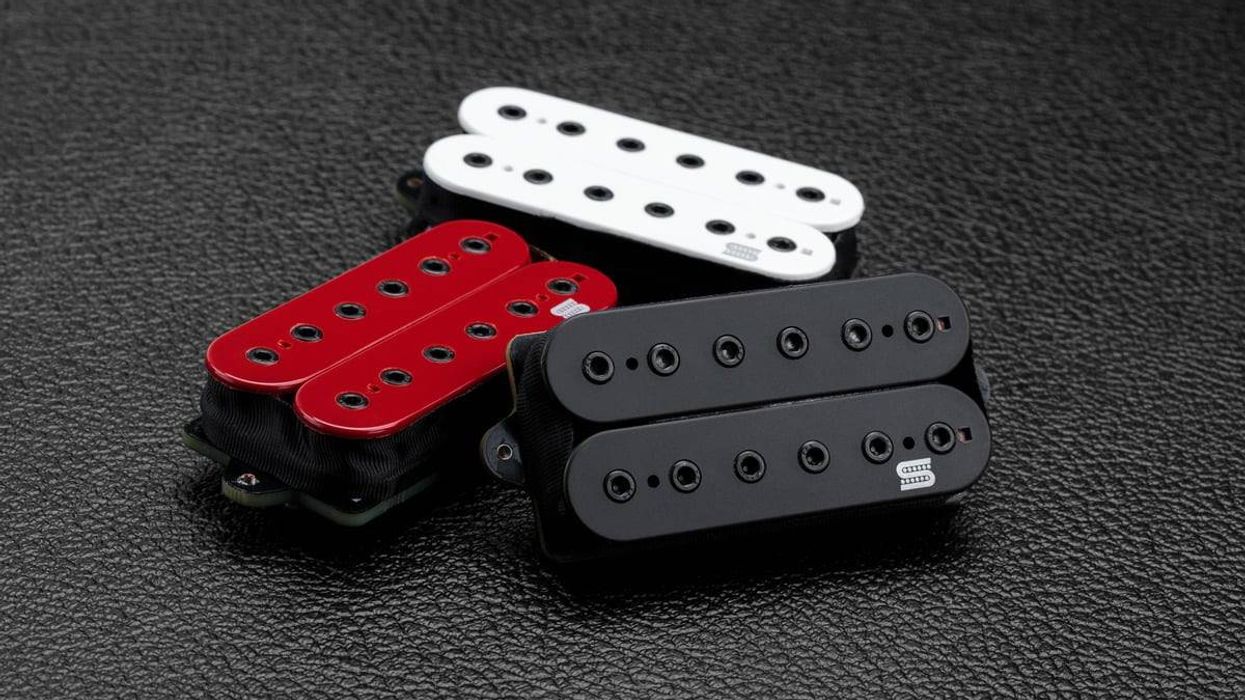Clip 1: Sandberg TM-5 bass. Low-pass filter engaged and filter direction up. Sense at 9 o’clock, res at noon, freq at noon.
Clip 2: Shabat passive P-style bass. Band-pass filter engaged and filter direction down. Sense at 8 o’clock, res at 1 o’clock, freq at 11 o’clock.
Clip 3: Epiphone Viola bass. Low-pass filter engaged and filter direction up. Sense at 9 o’clock, res at 2 o’clock, freq at 10 o’clock, and mode at 10 o’clock.
RatingsPros:Wide range of tones. Modulation function with warm distortion in lower sweeps. Impressive build quality and design. Cons: No blend control. Would have preferred in/out jacks on the sides, not top. Street: $299 OnkartGromt FunkyFellow onkartgromt.no | Tones: Ease of Use: Build/Design: Value: |
OnkartGromt, which roughly translates to “something good,” is a small company based in Norway operating under the slogan “bass effects for farmers and likeminded.” It’s even printed on the gorgeous wooden box with a design of the Norwegian countryside the company’s FunkyFellow filter comes in. Why am I talking about the box? As someone born and raised in Scandinavia, the design and craftsmanship is much appreciated, and I’ve just never seen an effect pedal of any kind come in more well-made or original packaging. I was understandably excited to check out what’s inside.
The Cockpit
The box also states that the FunkyFellow is a filter effect, but it was immediately apparent the pedal was designed for more tricks than your average filter. Its four rotary controls handle the sensitivity, resonance, frequency, and output gain. The pedal’s second footswitch engages the modulation mode and also functions as a tap-tempo switch. When the mode is engaged, the gain knob (labeled “mode”) transitions to a modulation speed selector. The pedal houses two rocker switches: one to select between the high-, low-, and band-pass filters, and the other to select the direction of the filter, up or down. Smack dab in the middle is a small LED screen that displays the curve of the filter effect as you are playing, which, I have to say, is quite fun to watch.
In Flight
To start out at a point that felt somewhat close to home, I found that switching the filter rocker to the low-pass setting retained all my low end and I could still feel the original signal from my bass. To complete this meat-and-potatoes filter tone, I set the sensitivity to 9 o’clock, the resonance and frequency to noon, and the filter direction to up. With my trusty Sandberg TM5 Patchwork bass straight into an Mbox, all the detail and punch from the fairly modern-sounding Delano pickups really shone through when going through the effect. The pedal also retained the zing in my roundwound strings and the string-to-string definition when playing chords—something that many filter effects struggle with, in my experience.
Skinny Funk
As soon as you flip the rocker switch from the low-pass setting to the band- or high-pass setting, the low end goes away. I was met with a range of smaller, slimier types of tones, perhaps best suited for intros and breakdowns (unless coupled with a second bass channel that retains the low end). With a Shabat P-style bass loaded with a passive Lollar pickup for old-school, honky slap goodness, I engaged the band-pass filter, which left me with nothing but mids as indicated on the little LED screen. I then set the sensitivity at 8 o’clock, resonance at 1 o’clock, frequency at 11 o’clock, and the filter direction down. My sound got trippy quickly and I comfortably landed in a Lenny Kravitz-meets-Parliament kind of place—a world, or rather, a planet, away from the previous tone.
Murkier Pastures
To hear a setting with the pedal’s modulation mode engaged, I dug out my Epiphone Viola bass and rolled off the tone control completely. I switched to the low-pass filter to get my natural low end back, and set the sensitivity to 9 o’clock, resonance at 2 o’clock, and the frequency and mode dials to 10 o’clock. With the filter direction in the up position, I was not only on a different tonal planet, but under the water in an intergalactic lake swimming in a new type of funk. A perk of the modulation setting is the small bit of warm distortion that slips through in the lower sweeps of the filter.
The Verdict
This luxury liner spaceship of a pedal excels in design, packaging, and build quality. There are many sound options hidden in every dial turn and flick of the switches, but tweaking should be done slowly due to their sensitivity. A blend control would have been nice for evening out some of the more far-out sounds the pedal provides, but if you’re a filter fanatic who wants more ways to express yourself beyond a traditional envelope filter, consider taking the FunkyFellow on a test flight.

























